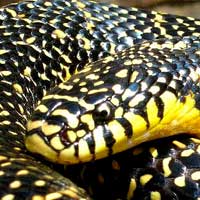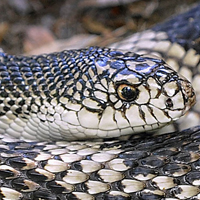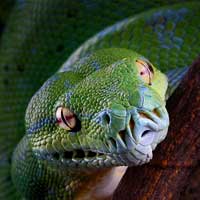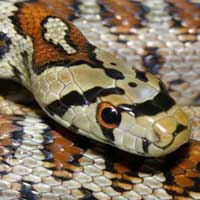The Rosy Boa: A Care Guide for This Gentle Snake
The Rosy Boa is scientifically named Lichanura trivirgata. It belongs to the Boidae family, which includes non-venomous constrictor snakes.
Scientific Name: Lichanura trivirgata
Snake Family: Boidae
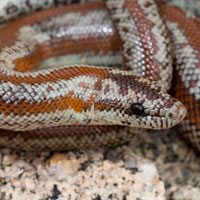
Rosy Boa: An Overview
The Rosy Boa (Lichanura trivirgata) is a small, non-venomous snake native to the southwestern United States and northern Mexico. Known for its gentle temperament and striking patterns, it’s a favorite among beginner and experienced snake keepers alike. With proper care, the Rosy Boa is a long-lived and manageable species, perfect for those looking to care for a calm and docile reptile.
Where Does the Rosy Boa Live? Exploring Its Natural Habitat
The Rosy Boa thrives in arid and semi-arid environments, reflecting its native range across deserts, rocky terrains, and scrublands. Its adaptability makes it well-suited for captivity.
| Habitat Feature | Description |
|---|---|
| Geographic Range | Southwestern United States and northern Mexico |
| Preferred Environment | Deserts, rocky outcrops, and coastal scrublands |
| Climate | Warm and dry with temperatures of 75-85°F |
What Does the Rosy Boa Eat? Understanding Its Diet
The Rosy Boa is a carnivore, primarily feeding on small mammals and occasionally birds in the wild. In captivity, a consistent and balanced diet ensures its health and longevity.
- Juveniles: Feed on pinky mice every 5-7 days.
- Adults: Feed on appropriately sized rodents every 10-14 days.
- Prey Size: Ensure prey is no larger than the snake’s girth to avoid regurgitation.
- Hydration: Always provide fresh, clean water in a shallow dish.
Behavior and Temperament of the Rosy Boa
The Rosy Boa is celebrated for its calm demeanor and ease of handling, making it an excellent choice for beginners. Its behavior is predictable and non-aggressive, making it a joy to observe and care for.
- Docile Nature: Rarely aggressive and highly tolerant of handling.
- Burrowing Instincts: Enjoys hiding under substrate or within rocks.
- Activity Level: Primarily crepuscular, active during dawn and dusk.
Caring for a Healthy Rosy Boa: Lifespan and Common Health Issues
With proper care, the Rosy Boa can live 20-30 years in captivity. Regular monitoring and a clean, well-maintained environment are essential for its health.
| Health Issue | Symptoms | Prevention |
|---|---|---|
| Respiratory Infections | Wheezing, open-mouth breathing | Maintain proper humidity and temperature |
| Skin Shedding Problems | Incomplete or stuck sheds | Ensure proper humidity levels |
| Parasites | Visible mites, itching | Regular cleaning and enclosure maintenance |
The Reproductive Process of the Rosy Boa
The Rosy Boa is ovoviviparous, meaning it gives birth to live young rather than laying eggs. Breeding them in captivity is achievable with proper environmental adjustments.
- Mating Season: Late winter to early spring.
- Gestation Period: Approximately 4-6 months.
- Litter Size: Typically 6-12 young.
- Provide temperature fluctuations to simulate natural seasonal changes.
How to Handle and Care for Your Rosy Boa
Caring for a Rosy Boa is straightforward, making it ideal for keepers of all experience levels. Proper handling and habitat maintenance ensure a stress-free and healthy snake.
- Maintain an enclosure temperature gradient of 75-85°F with a basking spot.
- Use a substrate like aspen shavings or coconut fiber for burrowing.
- Include hiding spots and climbing branches for enrichment.
- Handle gently, supporting its body fully to reduce stress.
- Regularly clean the enclosure and provide fresh water daily.



